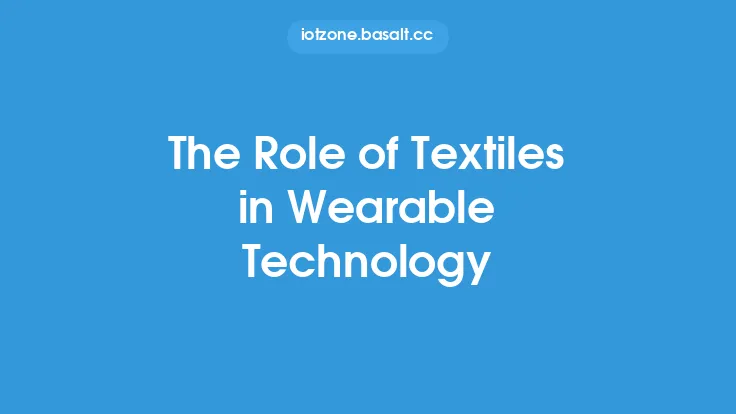The development of wearable technology has been rapidly advancing in recent years, with a wide range of devices being designed to track fitness, monitor health, and provide convenient access to information. However, one of the major challenges facing the widespread adoption of wearable technology is the need for a reliable and sustainable power source. Traditional battery-powered devices can be bulky, heavy, and require frequent recharging, which can be inconvenient and limiting. This is where energy harvesting comes in, a technology that enables wearable devices to harness energy from their environment and convert it into electrical energy.
Introduction to Energy Harvesting
Energy harvesting is the process of capturing and converting ambient energy into electrical energy, which can then be used to power wearable devices. There are several types of energy harvesting technologies, including solar, thermal, kinetic, and electromagnetic. Each of these technologies has its own advantages and disadvantages, and the choice of which one to use depends on the specific application and requirements of the wearable device. For example, solar energy harvesting is well-suited for devices that are exposed to sunlight for extended periods, while kinetic energy harvesting is more suitable for devices that are subject to mechanical stress or vibration.
Types of Energy Harvesting Technologies
There are several types of energy harvesting technologies that can be used to power wearable devices. Solar energy harvesting involves the use of photovoltaic cells to convert sunlight into electrical energy. This technology is well-suited for devices that are exposed to sunlight for extended periods, such as smartwatches or fitness trackers. Thermal energy harvesting involves the use of thermoelectric materials to convert heat into electrical energy. This technology is well-suited for devices that are in close proximity to the human body, such as smart clothing or wearable sensors. Kinetic energy harvesting involves the use of piezoelectric materials to convert mechanical stress or vibration into electrical energy. This technology is well-suited for devices that are subject to mechanical stress or vibration, such as smart shoes or wearable sensors.
Energy Harvesting for Wearable Devices
Energy harvesting can be used to power a wide range of wearable devices, from simple fitness trackers to complex medical devices. One of the main advantages of energy harvesting is that it can provide a reliable and sustainable power source, eliminating the need for batteries or frequent recharging. This can be particularly useful for devices that are used in remote or hard-to-reach locations, where access to power sources may be limited. Energy harvesting can also be used to power devices that are too small or too complex to be powered by traditional batteries. For example, energy harvesting can be used to power implantable medical devices, such as pacemakers or cochlear implants.
Technical Challenges and Limitations
While energy harvesting has the potential to revolutionize the field of wearable technology, there are several technical challenges and limitations that must be addressed. One of the main challenges is the efficiency of energy harvesting technologies, which can be limited by the amount of ambient energy available. For example, solar energy harvesting may not be effective in low-light environments, while kinetic energy harvesting may not be effective in devices that are not subject to mechanical stress or vibration. Another challenge is the power management and storage of harvested energy, which can be complex and require sophisticated electronics. Additionally, energy harvesting technologies can be affected by environmental factors, such as temperature, humidity, and noise, which can impact their performance and reliability.
Materials and Manufacturing
The development of energy harvesting technologies requires the use of specialized materials and manufacturing techniques. For example, solar energy harvesting requires the use of photovoltaic cells, which are typically made from silicon or other semiconductor materials. Thermal energy harvesting requires the use of thermoelectric materials, which are typically made from metals or ceramics. Kinetic energy harvesting requires the use of piezoelectric materials, which are typically made from crystals or ceramics. The manufacturing process for energy harvesting devices can be complex and require specialized equipment, such as clean rooms and vacuum chambers. Additionally, the integration of energy harvesting technologies into wearable devices can require sophisticated design and engineering, including the use of computer-aided design (CAD) software and simulation tools.
Applications and Future Directions
Energy harvesting has a wide range of applications in wearable technology, from fitness and health monitoring to medical devices and smart clothing. One of the most promising areas of application is in the field of implantable medical devices, where energy harvesting can provide a reliable and sustainable power source. Another area of application is in the field of smart clothing, where energy harvesting can be used to power wearable sensors and other devices. In the future, energy harvesting is likely to play an increasingly important role in the development of wearable technology, enabling the creation of smaller, more efficient, and more sustainable devices. Additionally, advances in energy harvesting technologies are likely to enable the development of new applications and use cases, such as wearable devices that can harness energy from the environment to power complex sensors and electronics.
Conclusion
In conclusion, energy harvesting is a critical technology for the advancement of wearable technology, enabling the creation of smaller, more efficient, and more sustainable devices. While there are several technical challenges and limitations that must be addressed, the potential benefits of energy harvesting are significant, and it is likely to play an increasingly important role in the development of wearable technology in the future. As the field of energy harvesting continues to evolve, we can expect to see new and innovative applications of this technology, enabling the creation of wearable devices that are more powerful, more efficient, and more sustainable than ever before.





